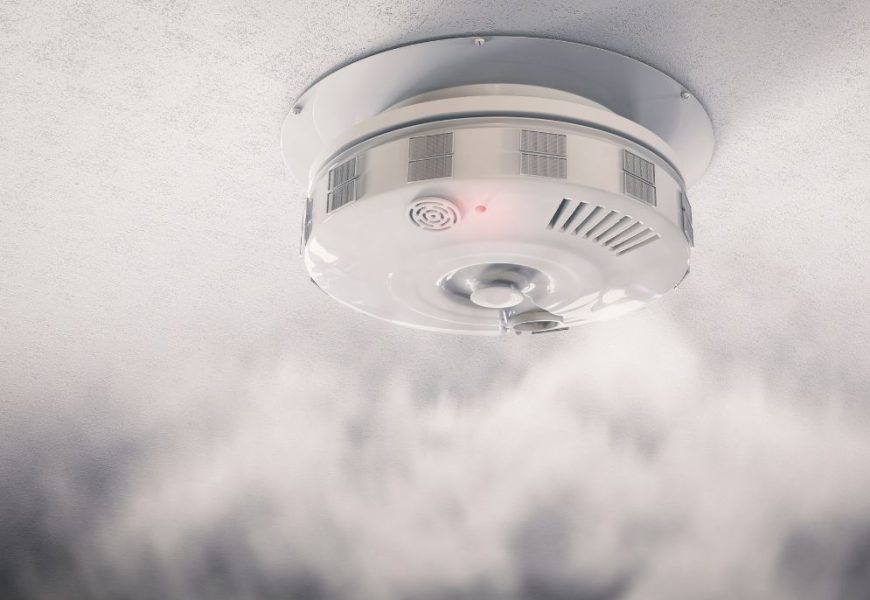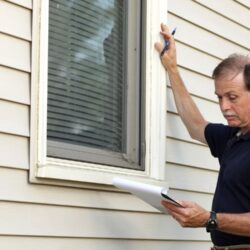Every year, the National Fire Prevention Association (NFPA) hosts Fire Prevention Week to raise awareness of fire safety and prevention in residential homes. This year, Fire Prevention Week is Oct. 6-12, 2024, with the theme, “Smoke alarms: Make them work for you!™”
We encourage all homeowners to refresh their knowledge of fire prevention. If you have children, use this opportunity to teach them what to do in case of a fire. Make it a family activity by creating a fire escape plan to map out an escape route together and develop a family plan.
Prevention
A crucial step in fire prevention is ensuring that your home has the correct number of smoke alarms. How many do you need? You should have a smoke alarm on every level of your home and in each living space, including the basement. Additionally, a carbon monoxide alarm should be placed in the basement, in a central location on every level and outside of sleeping areas. Test your alarms monthly and replace the batteries twice a year. Newer alarms may have 10-year lithium batteries, reducing battery replacement every decade. An effective way to monitor your alarms is to maintain a chart noting their locations, testing dates, battery replacements and upcoming maintenance.
Prevention Tip: Teach your family the sound of a smoke alarm and how to respond when it goes off. A fire extinguisher is another essential safety tool for any home. There should be one on each floor of your home, easily accessible in case of a fire.
Escape
Practice home evacuation drills twice a year. Before beginning your drill, sketch out an evacuation route and designate a meeting spot for everyone to follow. Review your fire escape plan to ensure everyone knows the two ways to escape and the meeting point outside the home. According to the Red Cross, you may have as little as two minutes (120 seconds) to evacuate if a fire starts in your home.
During evacuation drills, practice the following:
General Escape
- Stay low and move under any smoke while evacuating.
- Always check the doorknob and door with your hand before opening.
- Open doors slowly and be prepared to close them quickly if you encounter heavy smoke or fire.
Stop, Drop, Roll
- If your clothes catch fire, stop immediately, drop to the ground and roll back and forth until the flames are extinguished. Cover your face with your hands.
- If you can’t stop, drop and roll, use a blanket or towel to smother the flames.
If Trapped in an Upper Level or Unable to Exit:
- Cover vents and cracks around the door.
- Signal for help through the window using a light-colored cloth or flashlight.
- Call 9-1-1 and inform them of your location.
Always time your fire drills, and remember: DO NOT re-enter the house once you’ve escaped. Include an emergency communication plan in your drills. Make a list of contacts for emergencies and ensure your family knows when to use this plan during an escape. Once safely outside at the designated meeting spot, call 9-1-1. If someone or any pets are trapped inside, inform the 9-1-1 operator and firefighters. After contacting 9-1-1 and communicating with the firefighters, you can begin to notify others on your emergency contact list.
Fire-Safe Habits
The Pennsylvania Office of the State Fire Commissioner reports that children cause 100,000 residential fires annually. If you have children, you must teach them that fire is a tool, not a toy. Developing fire-safe habits is the best way to reduce fire risk in your home.
- Never leave a burning candle (or any lit flame) unattended—flameless candles are recommended for homes with children.
- Keep items at least three feet away from anything that produces heat.
- Fully extinguish cigarettes and cigar butts with water before discarding them, and use large, deep ashtrays.
- Turn off portable heaters when leaving a room or going to sleep.
- Keep matches and lighters out of children’s reach.
- Use flashlights instead of candles if the power goes out.
- Sleep with your bedroom door closed.
- Keep digital copies of valuable documents and records (e.g., birth certificates, Social Security cards, passports).
- If possible, install an automatic fire sprinkler system in your home.
Reducing Risks
The NFPA reports that heating equipment causes 48,530 fires annually, while electrical malfunctions account for 44,880 yearly fires.
Here are some ways to reduce these risks:
- Ensure all heating sources are clean and in working order.
- Check all electrical wiring and repair as needed. Replace frayed extension cords, exposed wires and loose plugs.
- Keep high-traffic areas clear of wiring—do not run wires under rugs.
- Ensure all outlets have cover plates.
- Avoid overloading outlets or extension cords.
- Store all combustible materials in open areas away from heat sources.
- Never use a stove range or oven to heat your home.
Staying Fire-Safe While Cooking
Cooking is responsible for 50% of residential fires annually, with unattended cooking being the leading cause.
Here’s how you can reduce your risk while cooking:
- Always stay in the kitchen when frying, grilling or broiling.
- Always stay home when simmering, baking, roasting or boiling.
- Keep pets and children away from cooking surfaces.
- Keep the stove area clean and free from anything that can catch fire.
- Never pour water on a grease fire.










